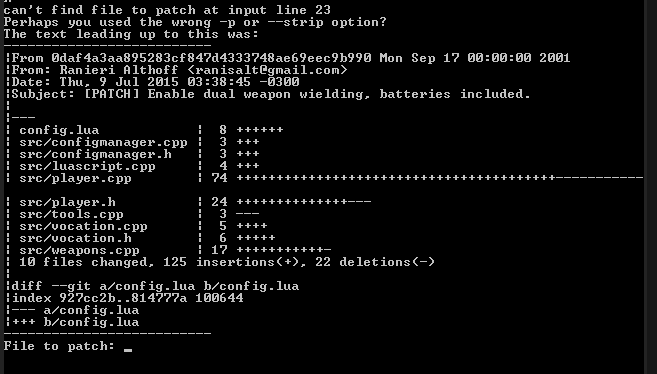Since the sources have changed since this patch has been introduced the safest way to do it is by hand.
It's easier than it looks to do however depending on the changes you might have to alter the patch to meet the needs of the sources & this could require basic to intermediate know of C++.
Let's say it doesn't require any knowledge & you are using a clean build, this line here tells which file to modify.
C++:
diff --git a/config.lua b/config.lua
config.lua
This next thing to look for is something like this
This tells you the line number to make the change so the 1st set of numbers 88,6 would tell you to look on line 88 for the original code. The minus ( - ) sign tells you that a change will be made on this line and the plus ( + ) in front of the number 88,7 is the change.
There is also normally a visual representation of what code comes before or after the change.
Such as:
Lua:
classicEquipmentSlots = false
These numbers can also be helpful when you are dealing with a large file such as luascript.cpp it give you a general idea of where to start looking for the code especially if you have already made changes to the source or the sources are slightly different.
If there are no plus ( + ) or minus ( - ) signs in front of the code then that means this is the original code. But if there is a ( - ) minus sign in front of it then this is code that has been removed or altered. If there is a plus ( + ) sign in front of the code then this is code that is new and is being added to that line.
You can also determine what has been added or removed/edited from the sources by its color code, red for edited/removed & green for new.

